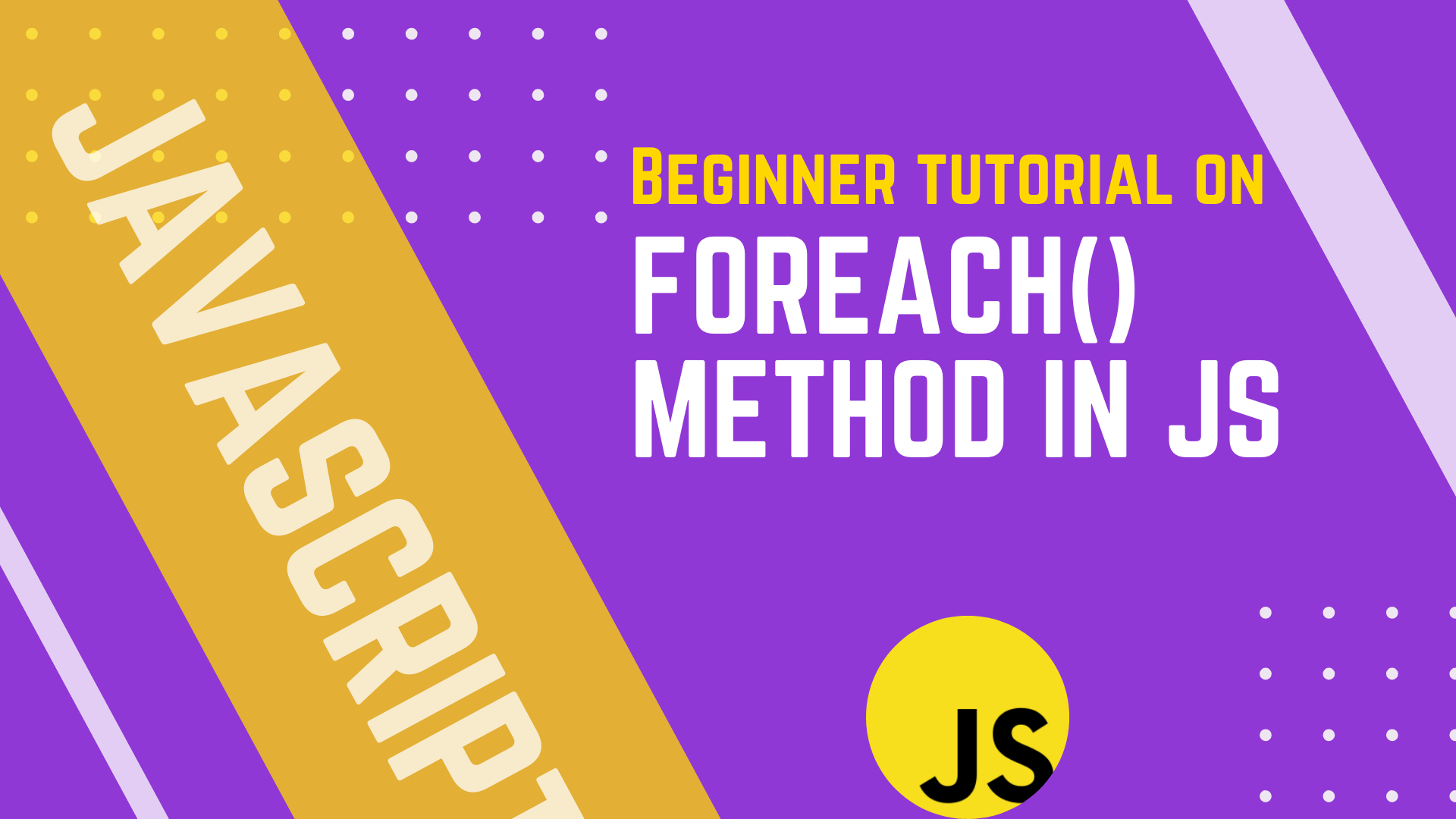JavaScript's BEST KEPT SECRET is the Power of forEach() Functions
 Shobo Adefowope
Shobo Adefowope
1. Introduction
- The
forEach()method in JavaScript is used to iterate over an array and execute a provided callback function on each element. It’s important to note thatforEach()does not return anything (it returns undefined), making it non-chainable.
Video Tutorial - YouTube
Parameters
callbackFn:
A function to execute for each element in the array. Its return value is discarded.
The function is called with the following arguments:element - The current element being processed in the array.
index - The index of the current element being processed in the array.
array - The array
forEach()was called upon.
thisArg (Optional)
Parameters of callbackFn in Detail
a. element
This is the value of the current element in the array during the iteration.
Example:
const numbers = [10, 20, 30]
numbers.forEach((element) => {
console.log(element) // Outputs: 10, then 20, then 30
})
b. index
This is the index (zero-based) of the current element in the array.
Example:
const numbers = [10, 20, 30]
numbers.forEach((element, index) => {
console.log(`Element: ${element}, Index: ${index}`)
})
// Outputs:
// Element: 10, Index: 0
// Element: 20, Index: 1
// Element: 30, Index: 2
c. array
This is the entire array that is being iterated over.
Example:
const numbers = [10, 20, 30]
numbers.forEach((element, index, array) => {
console.log(array) // Outputs [10, 20, 30] on every iteration
})
2. Basic Overview of forEach
- Syntax and basic usage:
const numbers = [1, 2, 3]
numbers.forEach((number) => console.log(number))
3. Advanced Use Cases
a. Manipulating DOM Elements
- Using
forEach()to manipulate multiple DOM elements is a common practice in JavaScript, especially when working with a list of elements selected using methods likedocument.querySelectorAll
const buttons = document.querySelectorAll('.button')
buttons.forEach((button, index) => {
button.textContent = `Button ${index + 1}`
button.addEventListener('click', () =>
alert(`You clicked Button ${index + 1}`)
)
})
b. Nested Arrays and forEach
- Example with a 2D array:
const matrix = [
[1, 2],
[3, 4],
[5, 6],
]
matrix.forEach((row) => row.forEach((cell) => console.log(cell)))
4. Common Pitfalls
a. Breaking out of forEach
In JavaScript, you cannot use break or continue inside a forEach() loop because forEach() is a method, not a loop in the traditional sense like a for, while, or do-while loop. Here's why:
Why break and continue Don’t Work in forEach()
breakandcontinueare designed for control flow in traditional loops likefor,while, anddo-while.The
forEach()method operates by calling a callback function for each element of the array, and it does not expose control over the iteration process to the user.Once the
forEach()method starts executing, it iterates through all elements without any way to stop or skip iterations from the inside.
b. What Happens If You Try to Use break or continue?
If you attempt to use break or continue inside a forEach() callback, you will get a SyntaxError, as these keywords are not valid within a function context.
Example:
const numbers = [1, 2, 3, 4, 5];
numbers.forEach((num) => {
if (num === 3) {
break; // SyntaxError: Illegal break statement
}
console.log(num);
});
Similarly, using continue would cause:
numbers.forEach((num) => {
if (num === 3) {
continue; // SyntaxError: Illegal continue statement
}
console.log(num);
});
c. How to "Break" or "Skip" in forEach()
Although forEach() does not support break or continue, you can achieve similar behavior with the following workarounds:
i. Simulating continue with return:
Using
returninside the callback skips the current iteration, effectively mimickingcontinue.Example:
const numbers = [1, 2, 3, 4, 5]
numbers.forEach((num) => {
if (num === 3) {
return // Skips the rest of the callback for this iteration
}
console.log(num)
})
// Outputs: 1, 2, 4, 5
ii. Modifying the Original Array
By default
forEach()does not mutate the array, but it can lead to mutation if the callback explicitly modifies it.Example of how modifying the array inside
forEachaffects iteration:
const numbers = [1, 2, 3]
numbers.forEach((num, index, arr) => {
arr[index] = num * 2
})
console.log(numbers) // [2, 4, 6]
iii. Avoiding undefined in Callbacks
- Handling missing elements in sparse arrays:
const arr = [1, , 3]
arr.forEach((value) => console.log(value)) // Skips undefined
5. Real-World Example
- Walk through a practical example, such as filtering and transforming API data:
const users = [
{ name: 'Alice', age: 25 },
{ name: 'Bob', age: 30 },
{ name: 'Charlie', age: 35 },
]
users.forEach((user) => {
console.log(`${user.name} is ${user.age} years old.`)
})
Video Tutorial - YouTube
Subscribe to my newsletter
Read articles from Shobo Adefowope directly inside your inbox. Subscribe to the newsletter, and don't miss out.
Written by

Shobo Adefowope
Shobo Adefowope
Taiwo is a passionate Website developer and a Technical writer with 2 years of experience building responsive and user-friendly web applications. He specializes in HTML, CSS, JavaScript, and various front-end frameworks like React, Nextjs, WordPress and WooCommerce. He uses his technical knowledge to create clear and concise documentation and tutorials that help developers and end-users understand complex systems and processes